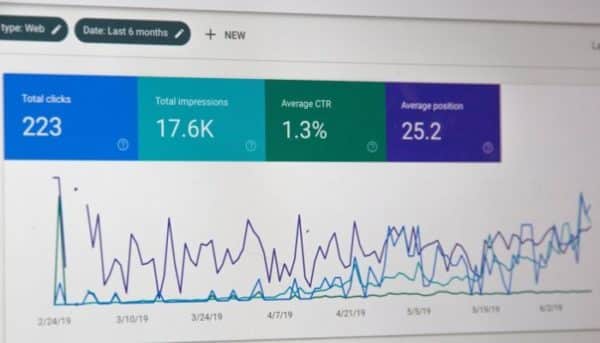Why Understanding Your Buyer’s Journey is Key to Delivering Content That Converts
Your website is one of your brand’s best marketing tools, provided it’s hard working and highly visible. Achieving both means catering to the buying journey your customers go on. Here’s how to get it right.
Having a slick-looking website is one thing, making sure potential customers can find it when they need it is another. And when they need it depends on where they are in what’s known as ‘the buyer’s journey’.
Understanding key details about that journey, like the fact that your wholesale customers are already 57 per cent of the way down the purchase path before they even consider contacting you, and providing content that caters to it is critical if you want to seal the deal ahead of a competitor. And the journey looks much the same whether your buyers are consumers or businesses – or both.
The buyer’s journey can be broken down into three stages.
Stage 1: Awareness. Here, a buyer has realised they’ve got a problem, an issue or a ‘need’, but aren’t yet 100 per cent sure what’s causing it, or how to solve it. Let’s imagine your product is a probiotic supplement. In the awareness stage, a potential customer might think, “My stomach’s been a bit upset for a while … I wonder what’s wrong with me?”
It’s here that their research begins and for nearly three-quarters of buyers that means turning to Google. Nine out of 10 of them will choose one of the first 10 results on page one of their search, so it’s vital you’re in that group. Even better if you’re number one on the list – the first result in the 10 attracts one-third of the click-throughs.
There are a variety of tried-and-tested search engine optimisation (SEO) strategies you can use to improve your site’s ranking (and you’ll find a few listed below) but the key to grabbing a buyer’s attention is providing content relevant to the stage they’re at.
In the awareness stage, that means content that’s focused on your buyer’s pain points or needs, and helping them understand the issue, not your product. This isn’t the time for the hard sell. Instead, you’re trying to establish your brand and your website as a credible, trustworthy source of information. Blog posts, informative website articles and social media posts are good choices.

Stage 2: Consideration. In stage two, the buyer has drilled down into their problem or need and are in search of a solution. They’ll be comparing and contrasting a few different ‘solves’. For example, that potential customer we met earlier might think, “Ah, I reckon my gut flora might be out of whack. Like that blog I read said, I have been stressed and my diet’s not great right now. Wonder what would help me sort it out?”
As the business producing that probiotic supplement, here’s your chance to highlight how and why probiotics can help, and can help more effectively than other non-probiotic gut-health products and remedies. Content that can help to deliver this message includes case studies, comparison charts, and scientifically backed stats, facts and articles.
Stage 3: Decision. In the final stage of the journey, your buyer has settled on the solution or product they want to use, and the only decision left is which brand to go with. So, they’ll be searching for information that helps them choose your probiotic supplement instead of a competitor’s.
Testimonials work really well here, as does content that demonstrates your exceptional customer service from go to whoa and how that benefits the buyer personally; any street cred you have around ethical or sustainability considerations; and of course any offers or incentives that might help nudge a buyer to choose your brand.
SEO made simple
Regardless of whether the online content you’re creating is designed to target buyers at stage one, two or three of their journey (hint: ideally you’ll be doing all three, because focusing purely on the decision-making stage means you’ve lost a valuable chance to build credibility during stages one and two) you can employ search engine optimisation (SEO) strategies to improve your site’s visibility.

SEO tip #1: Use keywords
The number one thing that will help your website rank highly is if it contains the same words and phrases potential customers are using to search with.
Making a list of keywords that are relevant to your business and products, and even your location, by putting yourself in a customer’s shoes and where they’re at in their buying journey, is a good place to start. But to up the ante you’ll want to make use of keyword search tools, like Google’s Keyword Planner, Keyword Tool and Google Trends.
Once you’ve identified your keywords, include them in page titles, headings, URLs and body copy, remembering that keywords tend to work harder for you in headings than in body text.
The trick is injecting keywords and phrases into your website copy in a way that still sounds natural. And don’t overuse them. Search engines are programmed to recognise ‘keyword stuffing’, where keywords are used as many times as possible even if it doesn’t make grammatical sense, and will downgrade your ranking if they spot it. As a guide, keywords should never account for more than seven per cent of your content.
SEO tip #2: Update your website frequently
Whether it’s adding a new blog or product, or simply editing existing content, frequently refreshing your website helps Google classify it as a source of up-to-date information, which can help your ranking. Some expert sources suggest adding new content to your website weekly and editing existing pages at least once every six months.
SEO tip #3: Link up
The more websites that provide links back to your page, the better. How frequently these ‘backlinks’ appear isn’t 100 per cent in your control, but the more often it happens sends a message to search engines that your page is relevant and they rank you higher as a result.
Peppering your website’s copy with links to other relevant pages on your site or external ones is smart, too. Again, search engines value websites that are well connected. To get the most SEO bang for your buck make sure the ‘anchor text’, or the clickable text for the link, includes keywords. Try to include at two or three links on every webpage.
-
Enquire!
- Book a stand
